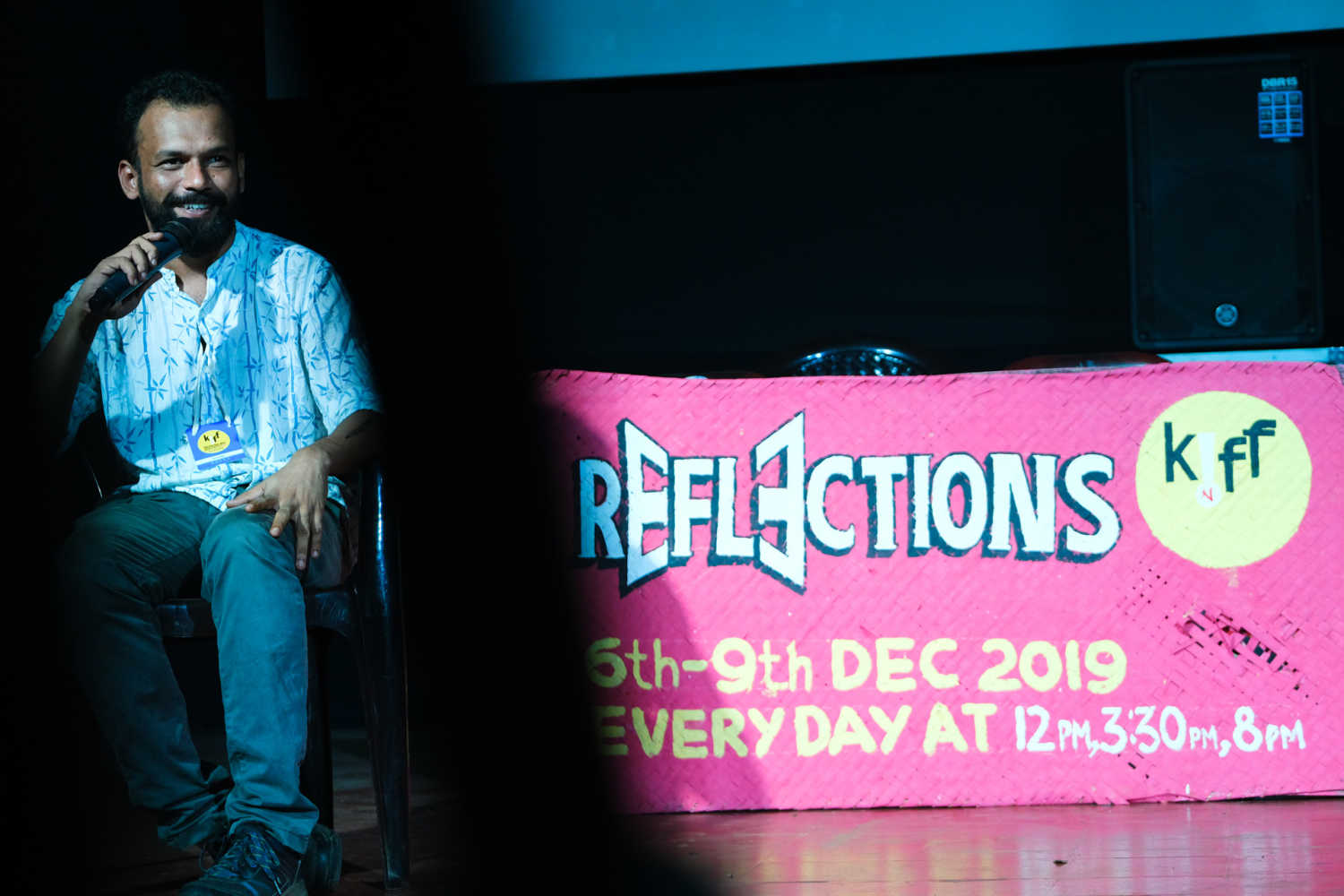Das talks about the logistic and technical challenges that came up during the making of Aamis, his latest film, directed by Bhaskar Hazarika.
The goal is to do what you want to do, come what may, says cinematographer Riju Das
New Delhi - 01 Apr 2020 19:00 IST


Sukhpreet Kahlon
A graduate in cinematography from the Film and Television Institute of India, Riju Das’s work in his latest film, Aamis (2019), earned him a nomination for Best Cinematography at the Tribeca Film Festival last year and has been widely appreciated.
Bhaskar Hazarika’s Assamese film is an intriguing story of a paediatrician Nirmali, who is trapped in a loveless marriage and the mundane tasks of domesticity. Her joyless, staid existence transforms with the entry of Sumon, a young student who is researching food habits and the use of various kinds of meats in the cuisine of the Northeastern part of the country.
As Nirmali’s palate starts to become more adventurous, Sumon is attracted to her, trying for ways to impress her. She finds herself craving exotic meats, and one kind in particular, that makes their relationship take a dark turn. The film delves into the realm of the exotic and the forbidden, exploring the sensual aspects of food. It presents some rather unusual meats in a very tempting and savoury way, which posed a challenge for the cinematographer.
Speaking about this aspect, Das said, “The meat was a metaphor [in the film], but meat, food and sexuality has been intertwined. So food became a metaphor for desire and it had to be shown in a particular way. But not in the way that food shows show food. We had to conceive a particular style in terms of how the food was shot, or how it looked. The art director and the person working in the costume team, we all got together and figured out what colour and design, especially since the meat mentioned is so unusual that there were no references that we could look up.”
Shooting in Assam presented another set of challenges for the cinematographer accustomed to working with the facilities in Mumbai, as did working on an independent production with a tight budget. However, the challenges spurred him and the team to become inventive and embrace indigenous techniques, making the overall experience quite memorable.
Sharing one such moment from the shooting, Das said, “We had very few diffusion frames to use in front of our lights, so the lightmen on our team, who were from Assam, suggested that we use bamboo. They cut up bamboo and we made frames out of them.”
Another minor hiccup was the lack of an association of junior artists for the extras needed in some scenes. So the team requested students from the Guwahati University campus to come on as extras. But the restrictions made the experience of shooting all the more fun. “The goal is to do what you want to do, come what may. At every point there were logistical and technical challenges, but we overcame them and it was a lot of fun,” Das added.
As a cinematographer Das talks about what drives his choice of projects saying, “The script is the first marker but what’s important for me is the association that I have with the director. That is more important I’d say, than the script.” Coming on board Aamis, however, was an easy choice.
“When I met Bhaskar we spoke about the script but apart from that we also spoke about pretty much everything under the sun. A film represents the director’s worldview so it’s important to know where the film is coming from and that provides the context for the kind of imagery that we build together as a team. So it’s the filmmaker and the script that are the determining factors,” he added.
The multi-layered story of Aamis also resonated with him, propelling him to come on board. “One could see from the very first narration [of the story] that it looks at things that are relevant to all of us at a socio-political level but also at a personal level. I thought the script raises questions about morality and what is acceptable. Not just in the current scenario but as a society, there are these invisible rules that one needs to follow," he said.
"So the film also evokes these questions within me as a person and that is of common interest to all of us. So I thought the questions were important for me to answer for myself, so that’s what prompted me to take up Aamis,” he said.
Aamis released in theatres in Assam and was received enthusiastically by critics and audiences alike. Responding to the reaction to the film, Das said that while cinephiles were familiar with Hazarika’s first film Kothanodi (2015), the response to Aamis nonetheless went beyond their expectations.
He said, “The film was in Tribeca and in MAMI [Mumbai Film Festival] also. There was a buzz about the film, which helped before it released in Assam. Anurag Kashyap saw the film and he loved it, so he immediately agreed to present the film. That helped it reach a wider audience outside Assam. But the response was quite overwhelming”.
Aamis is available for viewing on the streaming platform Movie Saints.
Related topics
Kazhcha Indie Film Festival



